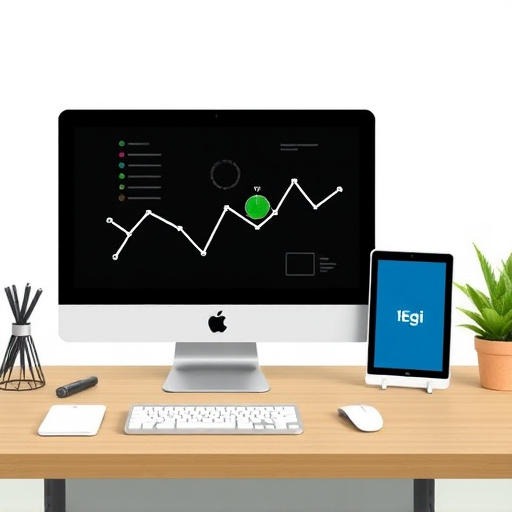Six Sigma is a data-driven methodology for improving business processes by minimizing defects, using key metrics like Pareto Charts, Histograms, and Control Charts. These tools help identify and prioritize critical factors (Pareto principle), visualize data distributions (Histograms), and monitor process stability (Control Charts). By combining these Six Sigma Key Metrics and Tools, organizations can make informed decisions, improve overall process quality, and achieve desired business outcomes.
In today’s data-driven world, Six Sigma stands as a powerful methodology for process improvement. This article explores the essential tools that underpin Six Sigma success—Pareto Charts, Histograms, and Control Charts. By understanding these key metrics and their unique roles, organizations can unlock insights, streamline operations, and achieve exceptional quality. We’ll delve into each tool’s function, benefits, and integration strategies for effective problem-solving in various business contexts.
- Understanding Six Sigma and Its Core Principles
- Pareto Charts: Unlocking the Power of Data Visualization
- Histograms: A Visual Representation of Frequency Distribution
- Control Charts: Ensuring Process Stability and Performance
- Integrating These Tools for Effective Problem Solving
Understanding Six Sigma and Its Core Principles

Six Sigma is a data-driven quality improvement methodology focused on reducing defects and variation in business processes. It prioritizes projects based on their impact on key performance indicators (KPIs), known as Six Sigma Key Metrics, to drive significant improvements. The core principles of Six Sigma include defining problems precisely, measuring current performance, analyzing root causes, improving processes, and controlling for future variations. By utilizing specific tools like Pareto Charts, Histograms, and Control Charts, organizations can efficiently navigate these stages, identify trends, visualize data distributions, and make informed decisions to enhance overall process quality.
Pareto Charts: Unlocking the Power of Data Visualization

Pareto charts are a powerful data visualization tool that plays a pivotal role in the Six Sigma framework, offering a clear and concise way to identify the most significant factors impacting a process or outcome. By representing data in a bar chart with categories ranked by frequency or severity, these charts help teams focus on the top few critical issues, often referred to as the “80/20 rule.” This principle, derived from Vilfredo Pareto’s observations, suggests that 80% of effects come from 20% of causes.
In Six Sigma projects, Pareto charts assist in prioritizing efforts by revealing the relative importance of various factors or defects. They provide a structured way to analyze and interpret data, enabling teams to make informed decisions and develop effective solutions. This visual representation simplifies complex information, making it accessible to all team members and stakeholders, thereby enhancing collaboration and decision-making processes for key Six Sigma metrics and tools.
Histograms: A Visual Representation of Frequency Distribution

Histograms are a powerful visual tool within the Six Sigma arsenal, offering a clear representation of data distribution. This graphical method displays the frequency of occurrences for discrete intervals, making it easier to identify patterns and outliers. By plotting bars that represent the number of data points falling within specific ranges, histograms provide valuable insights into the key metrics of a process. For instance, in manufacturing, a histogram can illustrate the distribution of product defects over various categories, helping teams pinpoint problem areas.
For Six Sigma projects, understanding the frequency distribution is crucial for process improvement. Histograms enable data analysts and project leaders to quickly assess the normality of data, detect anomalies, and make informed decisions. This visual representation facilitates effective communication, allowing stakeholders to grasp complex statistical information at a glance, thus streamlining the overall Six Sigma implementation.
Control Charts: Ensuring Process Stability and Performance

Control Charts are an indispensable tool within the Six Sigma methodology, designed to monitor process performance and ensure stability over time. These charts visually represent data points collected from a specific process, allowing analysts to identify patterns, trends, and any deviations that might indicate potential issues or inefficiencies. By tracking key metrics, such as mean, range, and standard deviation, control charts enable teams to make informed decisions and adjustments to keep processes optimized.
In the context of Six Sigma, maintaining a controlled process is crucial for delivering consistent, high-quality products or services. Control Charts provide a clear picture of process behavior, enabling analysts to set meaningful upper and lower control limits that define acceptable performance ranges. Any data points falling outside these limits trigger further investigation, ensuring that potential problems are identified and resolved promptly, thereby enhancing overall process stability and efficiency.
Integrating These Tools for Effective Problem Solving

In the realm of Six Sigma, integrating various data visualization tools is a powerful strategy for effective problem-solving. Pareto Charts, Histograms, and Control Charts stand out as key metrics and tools that offer valuable insights into process performance. By combining these techniques, professionals can gain a holistic view of data, identify trends, and pinpoint areas requiring improvement.
For instance, Pareto Charts help visualize the distribution of defects or issues, allowing teams to focus on addressing the most significant problems first. Histograms provide a detailed breakdown of data ranges, enabling a deeper understanding of variability within a process. Control Charts, on the other hand, monitor process stability over time, helping to detect any drift or anomalies that could indicate potential issues. Integrating these tools seamlessly enables Six Sigma practitioners to make data-driven decisions, ultimately driving process excellence and achieving desired business outcomes.
In conclusion, Six Sigma’s success hinges on leveraging key metrics and tools like Pareto charts, histograms, and control charts. These visual aids empower teams to interpret data effectively, identify process bottlenecks, and make informed decisions. By integrating these tools, organizations can streamline operations, enhance quality, and achieve their Six Sigma goals, ultimately driving significant improvements in efficiency and customer satisfaction.
